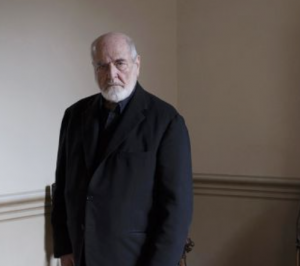Biography

Born in Biella in 1933, he began exhibiting in 1955 and in 1960 he held his first solo exhibition at the Galatea Gallery in Turin. In the two-year period 1961-1962 he arrived at the realization of the Mirror paintings, which directly include the presence of the spectator in the work, the real dimension of time and also reopen the perspective, reversing the Renaissance closed by the avant-gardes of the twentieth century. With these works, Pistoletto quickly achieved international recognition and success, which led him to create personal exhibitions in prestigious galleries and museums in Europe and the United States during the 1960s. The mirror paintings will form the basis of his subsequent artistic production and theoretical reflection. Between 1965 and 1966 he produced a set of works entitled Objects in Less, considered basic for the birth of Arte Povera, an artistic movement in which Pistoletto is the animator and protagonist. Starting in 1967, outside the traditional exhibition spaces, he carried out actions that represent the first manifestations of that “creative collaboration” that Pistoletto developed over the following decades, connecting artists from different disciplines and ever wider sectors of society. Between 1975 and 1976 he created a cycle of twelve consecutive exhibitions in the Stein Gallery in Turin, Le Stanze, the first of a series of complex works articulated over a year, called “time continents”, such as White Year (1989 ) and Happy Tortoise (1992). At the beginning of the 1980s, he created a series of rigid polyurethane sculptures, translated into marble for the personal exhibition of 1984 at the Forte di Belvedere in Florence. From 1985 to 1989 he created the series of “dark” volumes called Arte dello squalore. During the nineties, with Progetto Arte and with the creation in Biella of Cittadellarte-Fondazione Pistoletto and of the University of Ideas, he puts art in an active relationship with the various areas of the social fabric in order to inspire and produce a responsible transformation of society. In 2003 he was awarded the Golden Lion for Lifetime Achievement at the Venice Biennale. In 2007 he received the Wolf Foundation Prize in Arts in Jerusalem, “for his constantly creative career as an artist, educator and activator, whose tireless intelligence has given rise to premonitory art forms that contribute to a new understanding of the world”. In 2010 he is the author of the essay Il Terzo Paradiso, published in Italian, English, French and German. In 2011 he was Artistic Director of Event 2011 – L’art pour une ré-évolution urbaine in Bordeaux. In 2012 he promoted the Rebirth-day, the first universal day of rebirth, celebrated every year on December 21 with initiatives carried out in different places around the world. In 2013, the Louvre Museum in Paris hosts his personal exhibition Michelangelo Pistoletto, année un – le paradis sur terre. In the same year he received the Praemium Imperiale for painting in Tokyo.